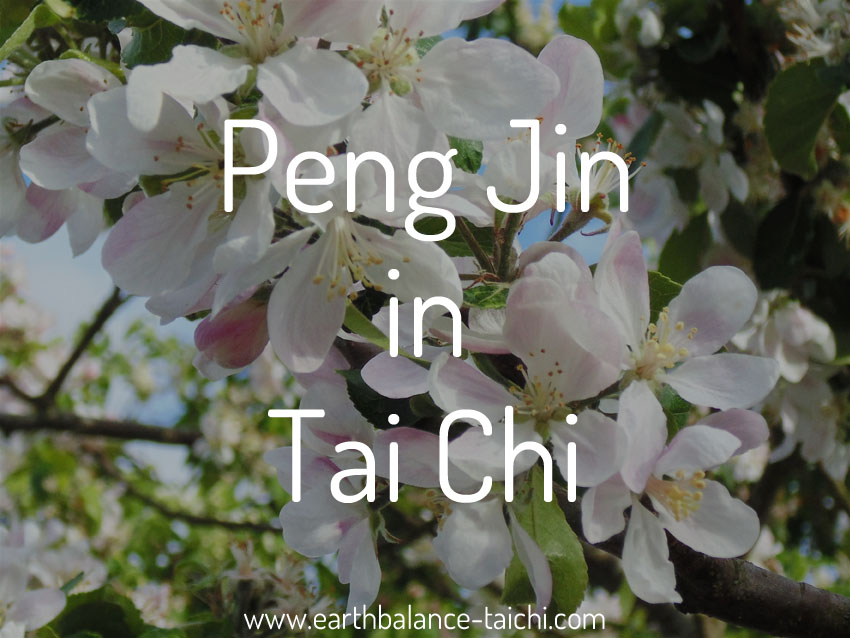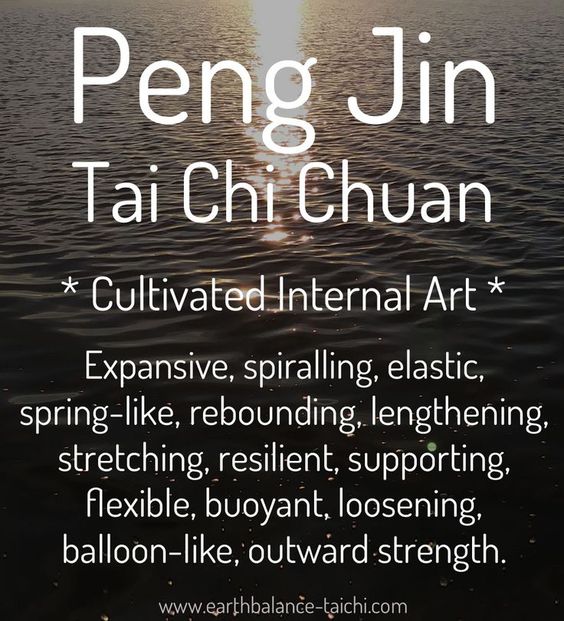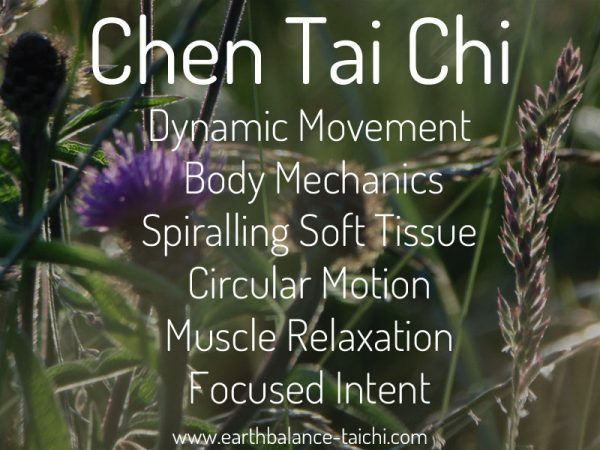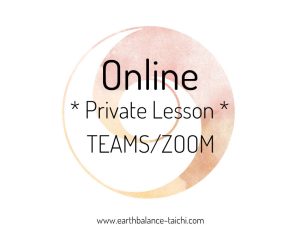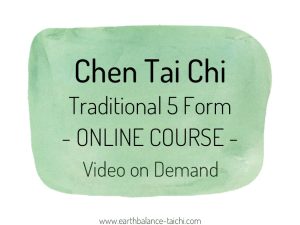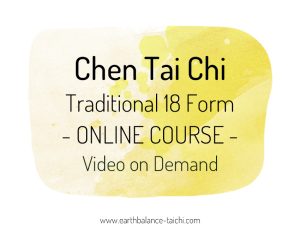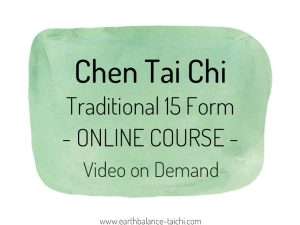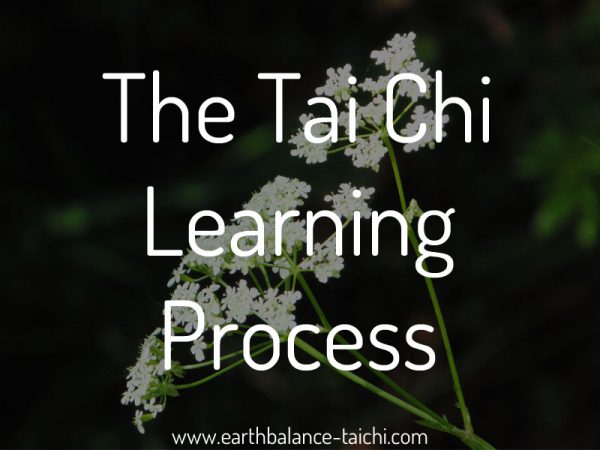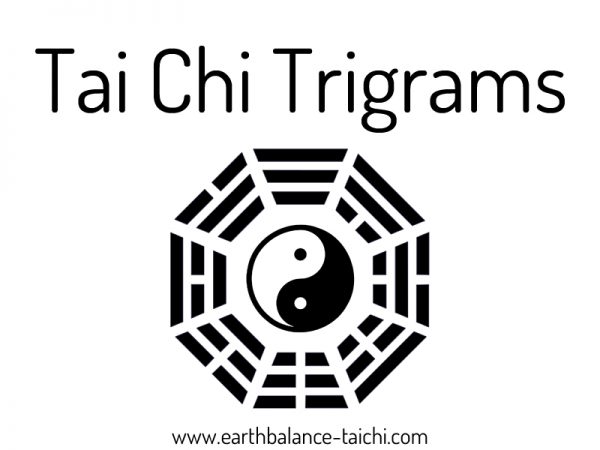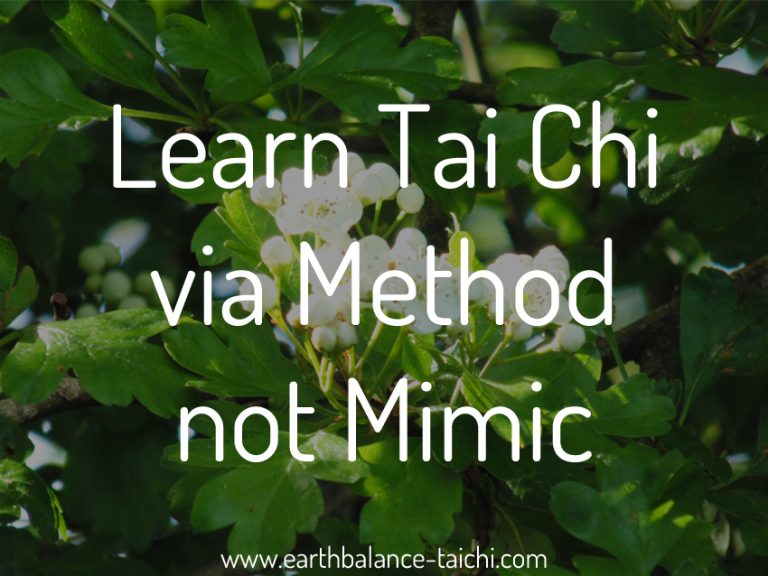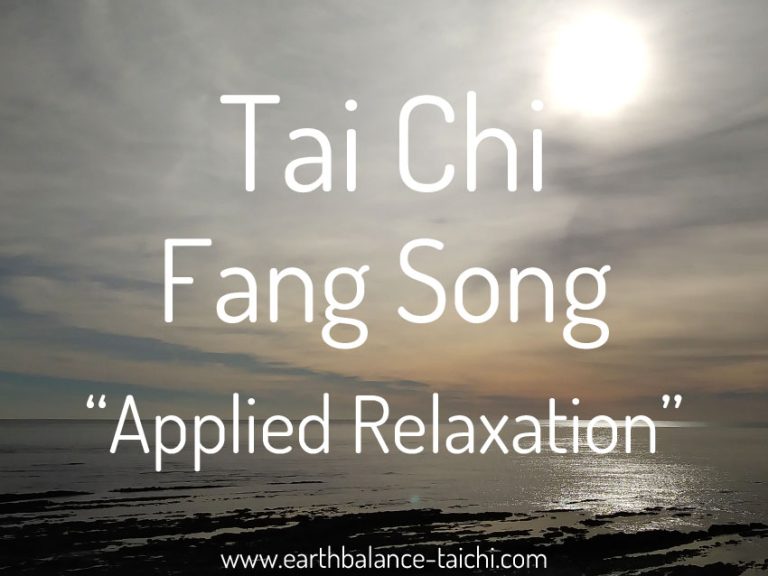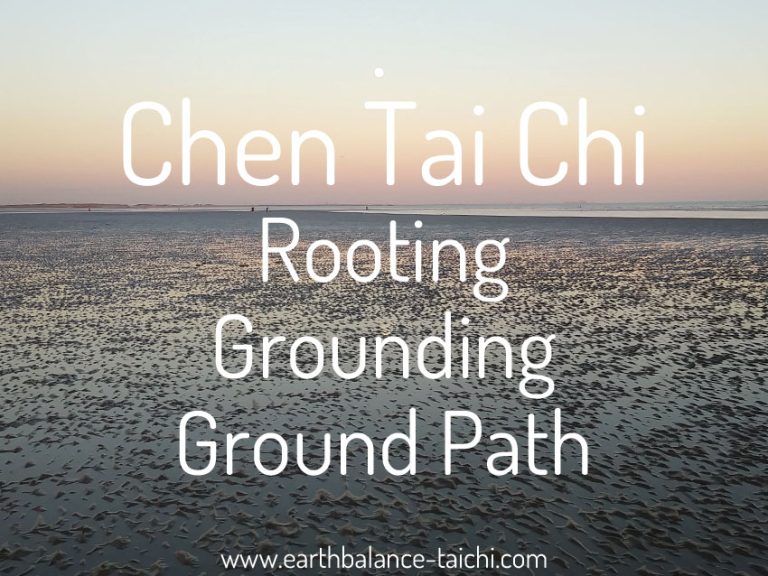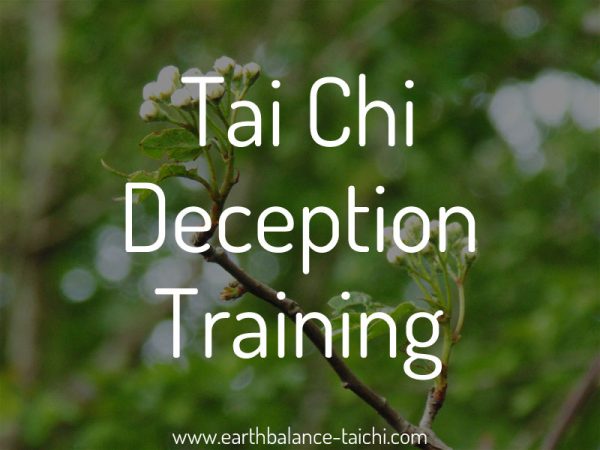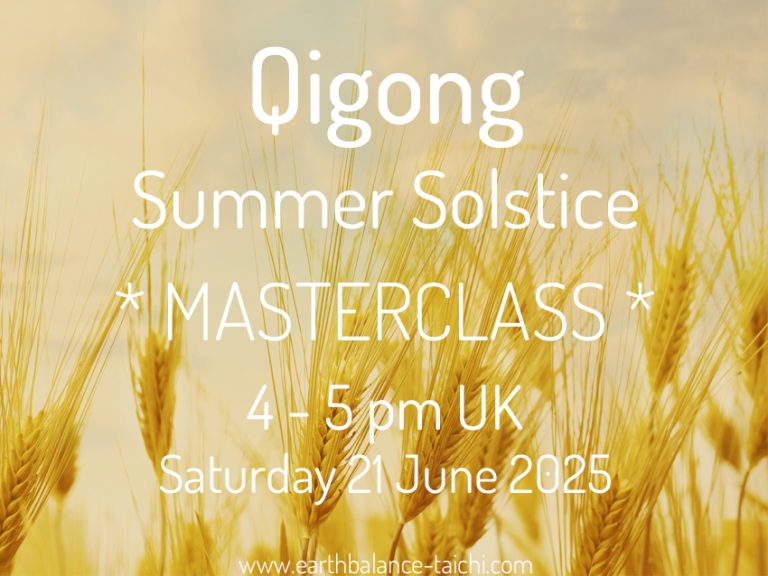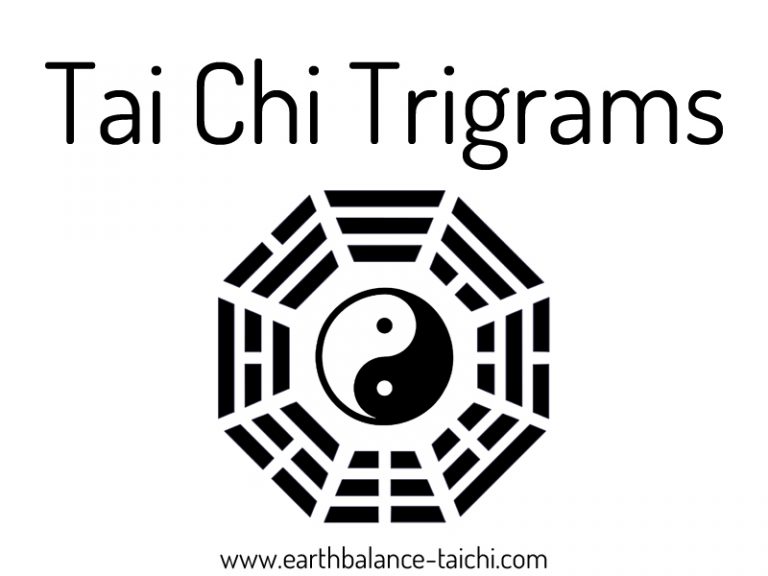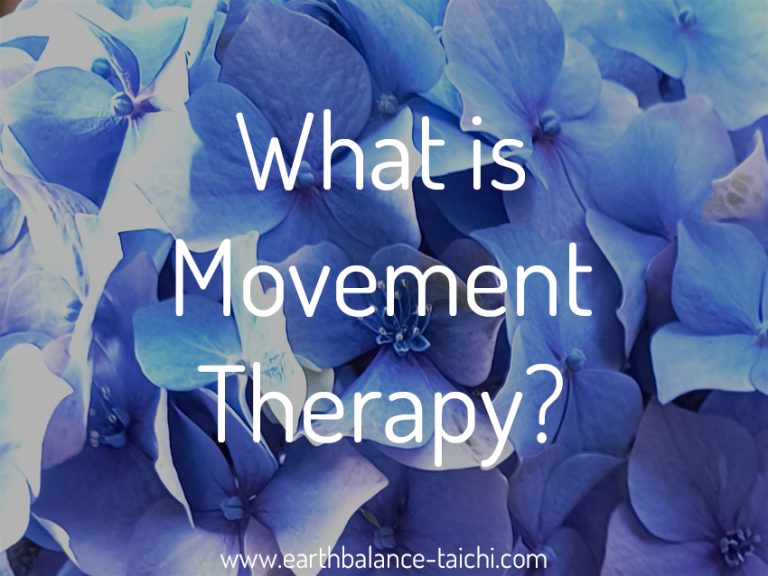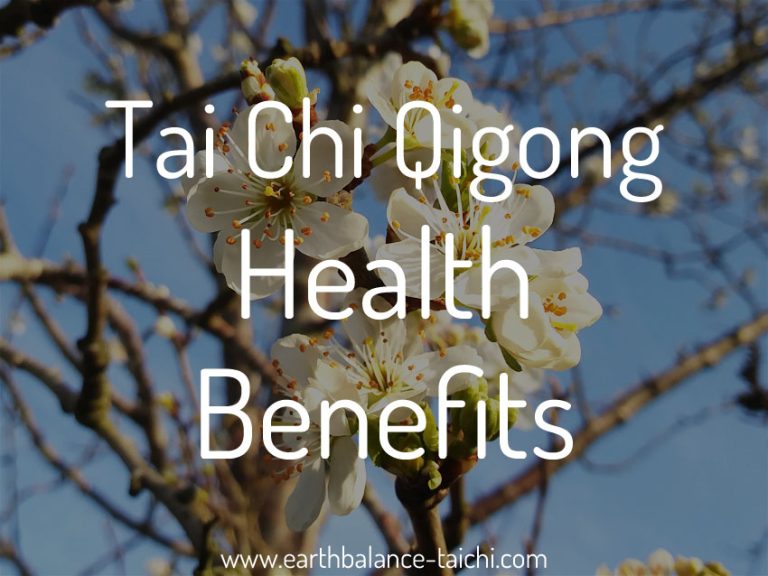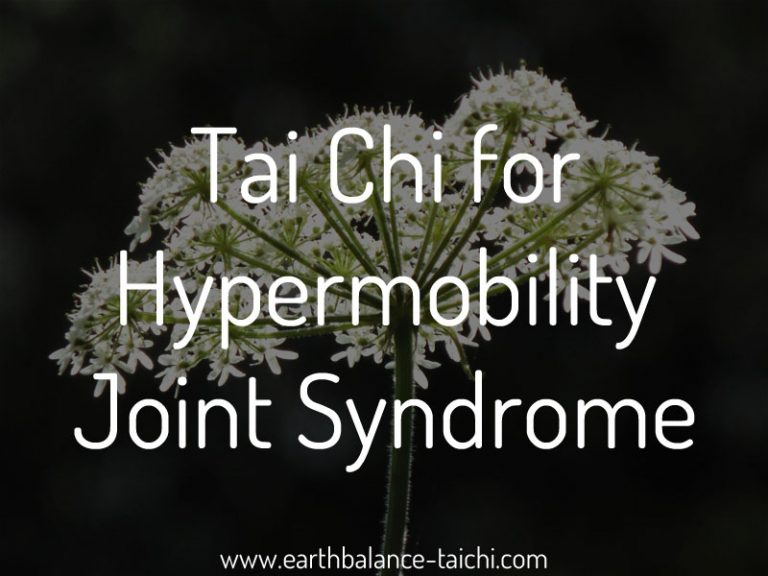Peng Jin in Tai Chi
Peng Jin in Tai Chi
Peng Jin is one of the applied principles in Tai Chi training. It is a whole body quality that times time, effort and patience to develop within your structure. Once established, it should always be present in all of your Tai Chi practice. It is best explored in person with an instructor who can guide you through the physical skills and sensitivity needed. This article explores Peng Jin in Tai Chi in detail.
Rough Translation
- Peng: Ward off - outward from the centre.
- Jin: Educated / cultivated / trained / skilled - strength / power / force.
- Peng Jin: Expansive, spiralling, elastic, spring-like, rebounding, lengthening, stretching, resilient, supporting, flexible, buoyant, loosening, balloon-like structure and outward force.
Peng Jin in Tai Chi
What is it? An elastic spiralling internal quality / applied principle in Tai Chi practice.
How to develop the skill? Lots of practice through partner work / push hands. Taking time to develop body sensitivity and inward listening skills (Ting Jin). Silk reeling and the form alone does not develop Peng Jin.
How does it feel to touch? Quiet! Until it’s not, and you have suddenly lost your centre. An unassuming soft, heavy and expansive quality in the limbs and body. Like a volume of flowing water that gathers momentum.
How does it feel in your body? Whole body aligned, soft and relaxed. Whilst expanding out in all directions everywhere at once with an elastic, springy, rebounding, and spiralling quality.
What does it do to your opponent? Neutralise / deflect an incoming force. To uproot and destabilise your opponent by getting under their centre (centre of gravity) to take control of their centre.
What does it do to your structure? Stops your soft and relaxed structure collapsing when receiving force. By being responsive and adaptive to the incoming force point and direction. Changing from full to empty in a rolling sphere.
What is it not? Resisting, withstanding, or gripping onto incoming force.
What is counter productive? Any physical tension in the body. Any forced muscular strength. Poor alignment. Too much relaxation and softness that collapses your structure.
What is it like? Pushing on a beach ball in water, the force spins the ball.
What other skills need to be present? Pliability in the soft tissues, loose joints, appropriate muscle use, a well aligned posture, good structure, stable and resilient rooting.
How long does it take to develop? A very long time, years and years.
Goal? To be softly sprung without any tension across your whole structure, like a flexible sphere. To maintain your centre even when facing someone who is bigger and stronger than you are.
Where to start? With an expansive quality in the whole body that is maintained through every movement. A rounded, soft, relaxed, elastic, pliable, buoyant, spiralling and rebounding quality within your structure.
Is it the same as Peng? Peng in Tai Chi has a slightly different meaning or expression, as it is one of the direct martial applications. Read my article on peng, lu, ji, an for more information.
Where can you see an example? Ken Gullette from www.internalfightingarts.com has a youtube video on peng jin, which is a the best visual explanation I have seen of the peng jin principle and the rubber ball theory.
Peng Jin in Tai Chi
Peng Jin + Alignment + Relaxation = Three principles that work together
An important note is that your structure must be aligned correctly for peng jin to work. read my article on how to hold yourself in stillness and motion in Chen Tai Chi. None of the principles work without good alignment. A poor alignment can go two ways, either by over extending the joints and limbs or being too relaxed and floppy.
Expanding, stretching and lengthening does not mean straightening or locking the joints or limbs, as this also drops the alignment and peng jin. The majority of people have residual tension in the four major joints of the body, the two hips and the two shoulders, both ball and socket joints. If the body is too tight and wooden, you can never establish peng jin.
Loosening must be worked on before / and in tandem with the principle peng jin. This principle is called fang song which must be maintained for peng jin to work. Fang song means applied relaxation, loosening of the joints, release of inappropriate muscle contraction and release of physical tension. This type of relaxation does not mean a collapsed, loose or floppy structure, as this drops peng jin. None of the principles work without fang song.
There is a fine balance between a collapsed and floppy structure, and an over-expanded and over-lengthened structure. This can be tested in person with a Tai Chi teacher. When peng jin is lost, it is easily apparent in stability, rooting and centre of gravity. Without peng jin, any force applied to your structure will uproot and destabilise you.
